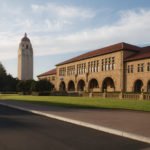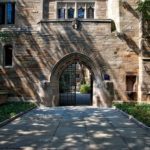Duke University Diversity: An In-Depth Look
What Covered:
- Overview of Duke University Diversity Statistics
- Cultural Resources at Duke
- Plans to Improve Diversity at Duke
- LGBTQ+ Inclusivity at Duke
- How Diverse and Inclusive is Durham, NC?
Duke University is known for many things, such as its reputation as one of the best schools in the nation, its super successful basketball team, and its tight-knit alumni network. Another characteristic associated with Duke is its reputation as a white, elite institution, but how well deserved is that reputation? Is there ethnic, cultural, geographic, and economic diversity on campus? If so, what resources are available to support or foster a diverse student body?
Overview of Duke University Diversity Statistics
Ethnic Diversity
It was only in 1967 that Duke University admitted its first Black student—for comparison, Harvard graduated its first Black student in 1870. White students are still the majority, but Duke’s campus has become a lot more diverse in the past 50+ years.
|
Ethnicity |
Percentage of Student Population |
|
Caucasian |
41.1% |
|
Asian American |
13.9% |
|
African American |
7.17% |
|
Hispanic |
7.67% |
|
Two or more races |
4.54% |
|
American Indian or Alaska Native |
0.289% |
|
Native Hawaiian or Pacific Islander |
0.0624% |
Duke hopes to one day have a faculty that mirrors the diversity of its student body, and has taken steps to achieve that goal. Duke has instituted affirmative action hiring policies and its Academic Council has formed a Task Force on Diversity that proposed ways to increase faculty diversity and foster a more inclusive environment.
As of 2016, minority faculty members (including those who self-identify as Hispanic, Black, American Indian, Asian, Native Hawaiian/Pacific Islander, or two or more races) accounted for 23% of the regular rank faculty population of 3,429.
In 2020, Forbes named Duke University one of the “Best Employers for Diversity,” placing the school eighth out of 500 companies and the first educational institution on its list.
Financial Diversity
Duke has a well-deserved reputation for attracting students from high-income families. According to a 2017 New York Times profile, 69% of Duke undergraduates come from families in the top 20% of income ($110,000+).
The median family income of a Duke student is $186,700 and the University ranked 20th out of 2,395 colleges in the share of students from the top 1%—that is, families who made about $630,000 or more per year. Conversely, just 3.9% of students come from the bottom 20% of the average family income.
|
Share of Students from the… |
Percentage of Student Body |
|
Top 0.1% |
3.8% |
|
Top 1% |
19% |
|
Top 5% |
44% |
|
Top 10% |
56% |
|
Top 20% |
69% |
|
Bottom 20% |
3.9% |
Duke University practices need-blind admissions—that is, they do not consider a student’s ability to pay when making an admission decision. They also meet 100% of a student’s demonstrated financial need. 52% of Duke students receive some form of financial aid, with the average need-based grant awarded in 2019-2020 being $54,225.
Geographic Diversity
Duke students come from all over—15% are North Carolina residents, but other states (such as California, New York, Florida, and New Jersey) are counted among major contributors to the school’s student body.
International students are also well represented on Duke’s campus. In 2022, more than 6,000 international students from 124 countries were enrolled as undergraduates, graduate students, and professional students at Duke. The five countries that send the most foreign students to Duke are:
- China
- India
- Korea
- Brazil
- Canada
There are limited financial resources available to international students at Duke University; however, Duke does provide between 20 and 25 international students with a University-provided need-based aid package.
Cultural Resources at Duke
Duke has made a variety of resources available to students in order to build a more diverse and inclusive college.
Center for Multicultural Affairs
The University’s Center for Multicultural Affairs (CMA) provides a space for students to examine topics like diversity and social justice, and also provides tools to enact positive change through a variety of programming and training opportunities.
Office for Institutional Equity
Duke’s Office for Institutional Equity is focused on building a respectful, diverse, and inclusive work and learning environment. It addresses complaints of discrimination, harassment, and sexual misconduct. The Office of Institutional Equity also provides training, workshops, and educational sessions and helps promote inclusive hiring, recruitment, and retention practices.
Duke LIFE
Duke LIFE (Low-Income, First-Generation Engagement) both creates and supports programs that help ensure the academic success of its first-generation and low-income students while also building community among them.
Mary Lou Williams Center for Black Culture
Since 1983, the Mary Lou Williams Center for Black Culture has provided a safe and supportive space for members of Duke’s Black community. The center provides a variety of programming of particular interest to Black students, hosts art exhibits that tie into Black culture, and is home to the Duke Black Alumni (DBA).
Center for Sexual and Gender Diversity
Students, staff, faculty, and alumni with marginalized sexual orientations, gender identities, and gender expressions will find support, space, and advocacy opportunities at the University’s Center for Sexual and Gender Diversity. The Center hosts numerous events and activities to build a sense of community, including:
- Coming Out Day
- Midday Mingles
- Transgender Day of Remembrance
- World AIDS Day
- Lavender Graduation
Living-Learning Communities
There are two living-learning communities at Duke worth noting for their support of a diverse and inclusive campus: the Mitchel-White House and the Eruditio et Religio.
- The Mitchell-White House is open to students with both an interest in learning about the people of the African diaspora and a desire to cultivate community amongst its members and allies.
- The Eruditio et Religio is a community centered on fostering relationships between people with different religious traditions and coming together for the common good.
Plans to Improve Diversity at Duke
In October 2020, Duke received a $16 million grant from the Duke Endowment to further its efforts to recruit diverse faculty and develop programming that enhances an inclusive environment.
- $10.5 million for recruiting and retaining diverse faculty
- $5.5 million to support programming to increase the understanding of historical and current racism, to combat racism, and to create a more inclusive environment
With this funding, Duke will expand its diversity hiring program, conduct a comprehensive assessment to address disparities in the workplace, and remove the name of Thomas Jordan Jarvis—a North Carolina Governor, Trinity College trustee, and avowed white supremacist—from a residence hall. Duke has also established an anti-racism website to keep the Duke community up to date on the University’s numerous initiatives.
The future is bright for Duke’s diversity, but there are also some scandals that the University is anxious to put in the past. The most notable occurred in 2006, when several white Duke lacrosse players were accused of raping a Black exotic dancer—a complex story that encompasses questions of race, gender, and privilege.
LGBTQ+ Inclusivity at Duke
Duke University received four out of five stars on the Campus Pride Index—an LGBTQ+ benchmarking tool for colleges and universities—receiving high marks for LGBTQ+ campus safety and institutional support and commitment.
The college itself has a relatively long, albeit turbulent, LGBTQ+ history on campus. The first LGBTQ+ organization—Duke Gay Alliance (DGA)—was formed in 1972, only to have its charter revoked in 1983. The 1990s brought more enlightenment and inclusion for LGBQT+ students with the formation of an LGBT task force and an LGBT student center, a trend that, for the most part, has continued through today.
The Center for Sexual and Gender Diversity is the hub of LGBTQ+ culture on Duke’s campus—it hosts a variety of programs and events on campus, along with providing educational resources. Another awesome initiative is OUTDuke, a list of Duke staff and faculty that serves as an informal resource to the members of the Duke community with a marginalized sexual orientation or gender identity.
Another great resource for Duke’s LGBTQ+ students is the Duke LGBTQ+ Network—a group of alumni, students, faculty, staff, and friends of Duke who are dedicated to serving the University’s lesbian, gay, bisexual, transgender, and queer (LGBTQ+) community.
How Diverse and Inclusive is Durham, NC?
Durham, North Carolina, is one of the most diverse cities in the state—Durham has a greater makeup of minority groups than any of the five largest cities in North Carolina. Ethnically, the city breakdown is:
|
Ethnicity |
Percentage of the Population |
|
White |
40% |
|
Black/African American |
37.1% |
|
Hispanic |
13.24% |
|
Asian |
5.32% |
|
Two or more ethnicities |
3.36% |
Durham is also welcoming to LGBTQ+ people; the city hosts the state’s largest Pride festival, and OutSouth—the second-largest LGBTQ+ film festival in the Southeast. In 2015, the city opened the LGBTQ Center of Durham, a place where all LGBTQ+ lived experiences are affirmed, supported, and celebrated.
Durham has a strong food scene and Duke students will find everything from Southern-style home cooking to Asian, African, European, and Central and South American cuisine available within the city. Durham is also a rare city where you can find both Eastern North Carolina style (known for its vinegar base and peppery bite) and Western North Carolina style (known for its rich, sweet taste and typically made with ketchup and sugar) barbecue—how’s that for diversity?
Is Duke University the Right Fit for You?
Successful students choose a college that, on the whole, meets their expectations of the college experience. This includes factors like setting, size, and location. It also accounts for other, more nuanced characteristics, like whether you want to live on- or off-campus, and if the cafeteria serves food compatible with your diet.
If you’re feeling overwhelmed by all these factors, check out our free school search tool. This allows you to personalize your college search and find your best-fit school based on preferences like diversity, majors, location, and many others.
We’ll also help you find a school based on your chances of acceptance. Our free chancing engine uses both quantitative and qualitative data to predict your odds of acceptance and gives you tips for improving your profile. Using this tool, you’ll learn how to increase your chances at Duke and many other schools!


